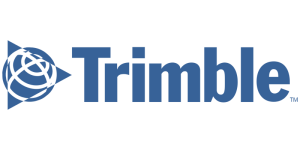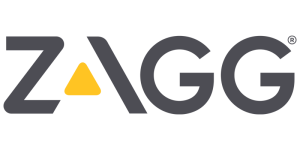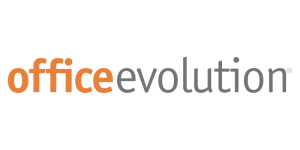How does predictive analysis aid in understanding search intent for 2024 SEO?
In the ever-evolving landscape of digital marketing, search engine optimization (SEO) remains a cornerstone of online visibility and success. As we look ahead to 2024, the integration of predictive analysis into SEO strategies has become a game-changer for businesses aiming to stay ahead of the curve. By enabling marketers to anticipate trends, interpret user behavior, and understand the nuances of search intent, predictive analytics is revolutionizing the way we approach SEO. This powerful tool harnesses the might of data, machine learning, and sophisticated algorithms to forecast future search patterns, providing invaluable insights that can be leveraged to optimize content, enhance user experience, and ultimately drive organic traffic.
The ability to understand and cater to search intent has always been pivotal to SEO success. In 2024, this remains truer than ever, as search engines continue to refine their algorithms to better match users’ queries with relevant content. Traditional keyword optimization is no longer sufficient; the search engines of the future demand a deeper comprehension of the motivations behind queries. Predictive analysis steps in as the key to unlocking this deeper understanding. By analyzing vast sets of search data, it can identify emerging trends and subtle shifts in consumer behavior before they fully manifest in the search engine results pages (SERPs).
This predictive prowess enables businesses and SEO professionals to adapt their strategies proactively rather than reactively. With a forward-looking approach, they can create content that aligns with the anticipated interests and needs of their target audience, optimize for upcoming search terms, and adjust their tactics in anticipation of algorithm changes. The result is a more agile, responsive SEO strategy that can maintain relevance and effectiveness in the dynamic digital marketplace of 2024.
In this article, we will explore the transformative impact of predictive analysis on SEO, how it informs our understanding of search intent, and the ways in which businesses can harness its potential to gain a competitive edge in the digital realm of the near future. From improving content relevancy to enhancing user engagement, predictive analytics is not just a buzzword—it’s the next frontier in the quest for SEO dominance.
Table of Contents
1. Understanding Predictive Analysis in SEO
2. The Role of Machine Learning and AI in Predictive SEO
3. Identifying Patterns in User Behavior for Search Intent Prediction
4. The Impact of Search Algorithms on Predictive Analysis
5. Predictive Analysis Tools for SEO Keyword and Trend Forecasting
6. Integrating Predictive Insights with Content Strategy for SEO Optimization
7. FAQs
Instant SEO Checker + Score & Report
Enter the URL of any landing page to see how optimized it is for one keyword or phrase...
Understanding Predictive Analysis in SEO
Predictive analysis in SEO refers to the use of data, statistical algorithms, and machine learning techniques to identify the likelihood of future outcomes based on historical data. The goal is to go beyond knowing what has happened to providing a best assessment of what will happen in the future. In the context of SEO, predictive analysis can be a powerful tool for understanding and anticipating search intent, which is crucial for optimizing websites for 2024 and beyond.
Search intent is the purpose behind every search query. Understanding this intent is vital for SEO because it helps content creators and marketers to tailor their content to meet the needs of users. Predictive analysis helps in this regard by analyzing search data and user behavior to forecast future trends and patterns in search queries. By doing so, it provides insights into the types of content and keywords that are likely to gain prominence or become relevant in the near future.
For instance, by looking at the search queries and user engagement metrics from previous months or years, predictive analysis can help determine which topics are gaining interest over time and which are diminishing. This can be particularly useful for creating content calendars, identifying potential keyword opportunities, and staying ahead of the competition by addressing emerging areas of interest before they become oversaturated.
Moreover, predictive analysis can help SEO professionals understand the cyclical nature of certain queries. For example, topics related to holidays or seasonal events tend to have predictable patterns each year. By analyzing these patterns, SEO experts can prepare optimized content in advance, ensuring that they rank well by the time the relevant season or event comes around.
Another aspect where predictive analysis is beneficial is in understanding the evolution of search queries. As society changes, so do the ways in which people express their needs and questions in search engines. Predictive analysis can help anticipate shifts in the language and phrasing of search queries, allowing for the optimization of content to match these changes.
Overall, the use of predictive analysis in SEO is about making informed decisions based on data-driven forecasts. It empowers SEO practitioners to proactively adapt their strategies, ensuring that their content remains relevant and visible in a search landscape that is constantly evolving. As search engines become more sophisticated and the amount of available data grows, the role of predictive analysis in understanding search intent is likely to become even more significant.
Google Ads Success Example
The Challenge: The Challenge: Increase new dental patients with better Google Ads campaigns.
The Role of Machine Learning and AI in Predictive SEO
The integration of machine learning and artificial intelligence (AI) into SEO practices has significantly advanced the capabilities of predictive analysis. The role of machine learning and AI in predictive SEO is crucial as they provide the technological backbone for analyzing large sets of data to forecast future trends and user behaviors. By leveraging these technologies, SEO experts can develop strategies that align closely with how search engines are likely to evolve.
Machine learning algorithms are adept at identifying patterns and anomalies in data that would be impossible for humans to discern manually. This capability allows for the analysis of search queries, user engagement metrics, and other relevant data to understand the nuances of search intent. For instance, AI can track shifts in keyword relevance or the emergence of new search terms that are beginning to gain traction. By recognizing these patterns early on, businesses can adjust their content and SEO strategies to stay ahead of the curve.
Moreover, AI can personalize the user experience by predicting what information or products a user is likely to search for based on their past online behavior. This level of personalization is becoming increasingly important as search engines strive to provide more tailored results. SEO strategies that leverage AI for this purpose can gain a competitive edge by appearing more frequently in highly relevant search results.
Another significant aspect is the continuous learning process inherent in machine learning models. As these models are exposed to more data over time, they become more accurate in their predictions. This means that the role of machine learning and AI in predictive SEO is not static; it is constantly evolving and improving. SEO strategies that can adapt to these improvements quickly will benefit from a more dynamic and forward-thinking approach.
Machine learning and AI also assist in semantic search optimization, helping to understand the context and intent behind search queries. This is especially important as search engines become more sophisticated in interpreting the meaning behind users’ searches, rather than relying solely on keywords. By understanding the intent, websites can create content that answers the underlying questions users may have, even if they don’t use the exact terms in their search.
In summary, the role of machine learning and AI in predictive SEO is multifaceted, involving pattern recognition, personalization, continuous learning, and semantic understanding. These technologies empower SEO experts to make more informed decisions and to anticipate future trends, ensuring that their digital marketing strategies remain effective and relevant in the ever-evolving landscape of search engine optimization.
Identifying Patterns in User Behavior for Search Intent Prediction
Identifying patterns in user behavior is a crucial aspect of predictive analysis in SEO, particularly when it comes to understanding and anticipating search intent. The core idea is to analyze vast amounts of search data to discern trends and patterns that can indicate what users are likely to search for in the future. By doing so, SEO professionals can tailor content and strategies to align with these predictions, potentially improving a website’s visibility and relevance in search engine results pages (SERPs).
Predictive analysis in this context involves collecting and evaluating data from various sources, including search query histories, click-through rates, time spent on pages, and other engagement metrics. This data is then used to develop models that can infer user intent based on past behaviors. For example, if there is a trend of users searching for “winter jackets” as the colder months approach, predictive analysis can help identify this pattern and guide an e-commerce retailer to optimize their content and inventory for such queries ahead of time.
Moreover, understanding user behavior extends to recognizing the different types of search intent, such as informational, navigational, transactional, or commercial investigation. Predictive analysis can help determine the intent behind queries by looking at the language used, the type of content typically clicked on, and the progression of a user’s search activities. For instance, if users often follow up a product-related query with comparisons or reviews, it suggests a commercial investigation intent, and SEO efforts can be steered to provide such content.
The ability to predict search intent through user behavior patterns is becoming increasingly sophisticated with the advancement of machine learning algorithms. These algorithms can process large datasets more efficiently and identify subtler trends that might be missed by manual analysis. This automation of insight generation enables SEO experts to respond more swiftly to emerging trends and optimize their strategies accordingly.
In summary, identifying patterns in user behavior is a fundamental component of using predictive analysis for SEO. By understanding these patterns and the search intent they signify, businesses can create more targeted content, improve user experience, and ultimately, enhance their search engine ranking potential as we move into 2024 and beyond.
SEO Success Story
The Challenge: The Challenge: Design an SEO friendly website for a new pediatric dentist office. Increase new patient acquisitions via organic traffic and paid search traffic. Build customer & brand validation acquiring & marketing 5 star reviews.
The Impact of Search Algorithms on Predictive Analysis
Predictive analysis in the context of SEO is heavily influenced by the underlying search algorithms that govern how content is ranked and presented to users. As we look towards 2024, understanding the impact of these algorithms on predictive analysis is crucial for SEO professionals.
Search engines like Google continually refine their algorithms to deliver the most relevant and high-quality content to users. These algorithms take into account a myriad of factors, such as keyword relevance, site authority, user engagement, and content quality. For predictive analysis, this means that any forecasts or predictions about search trends and user intent must align with the latest algorithm updates.
The algorithms themselves are becoming increasingly sophisticated, often employing machine learning and artificial intelligence to better understand and predict user behavior. This advancement allows search engines to anticipate the types of content and topics that will satisfy user queries, even before the user has fully articulated their search intent. For SEO professionals, this means that staying abreast of algorithm updates and how they interpret user intent is more important than ever.
The impact of search algorithms on predictive analysis also extends to personalization. Modern search engines aim to tailor search results to individual users based on their past behavior, preferences, and search history. Predictive analysis must, therefore, consider not only general trends but also how personalized search results affect visibility and traffic for specific content.
Furthermore, as voice search and natural language processing technologies continue to evolve, search algorithms are adapting to these changes. Predictive analysis in 2024 will need to account for the rise of conversational queries and the nuances of spoken language in search. This shift requires a deeper understanding of semantic search and the ability to predict the context and intent behind voice searches.
In conclusion, the impact of search algorithms on predictive analysis is a dynamic factor that SEO experts must monitor closely. By analyzing algorithm trends and updates, SEO practitioners can make more accurate predictions about the future of search intent and optimize their strategies accordingly. This ongoing adaptation to the search landscape is what will enable SEO professionals to stay ahead of the curve and achieve success in the ever-evolving world of search engine marketing.
Jemsu has been a great asset for us. The results have grown at strong positive linear rate. They have been extremely accessible, flexible, and very open about everything. Natalya is a star example of how to work with your accounts to drive them forward and adjusts to their quirks. Jaime is able to clearly communicate all of the work that is being done behind the scenes and make sure that all of my team is understanding.
I couldn’t be more pleased with my JEMSU Marketing Team!
Julia, Tamara, Joelle and Dally have exceeded my expectations in professionalism, creativity, organization, and turn around time with my Social Media Management project.
I have thoroughly enjoyed sharing my journey with this team of empowered women!
Thank you JEMSU! Your team designed and launched my new website, and developed strategies to drive traffic to my site, which has increased my sales. I highly recommend your Website & SEO Agency!
Jemsu has always been professional and wonderful to work with on both the SEO and website design side. They are responsive and take the time to explain to us the complicated world of SEO.
Jemsu is an excellent company to work with. Our new website blows away our competition! Unique, smooth, and flawless. Definite wow factor!
The folks at JEMSU were excellent in designing and launching our new website. The process was well laid out and executed. I could not be happier with the end product and would highly recommend them to anyone.
Jemsu is a great company to work with. Two prong approach with a new site and SEO. They totally redesigned my website to be more market specific, responsive, and mobile friendly. SEO strategy is broad based and starting to kick in. My marketing will also be adding Facebook and Google ads in the coming weeks. Thanks for your all you hard work.
JEMSU has wworked with our team to create a successful campaign including incorporating an overall rebranding of our multiple solutions. The JEMSU team is embracing of our vision and responds timely with life of our ideas.
JEMSU is great company to work with. They listen & really work hard to produce results. Johnathan & Sasha were such a big help. If you have a question or concern they are always there for you.
I would definitely recommend them to anyone looking to grow their company through adwords campaigns.
Jemsu have exceeded our expectations across all of our digital marketing requirements, and I would recommend their services to anyone who needs expertise in the digital marketing space.
JEMSU was able to quickly migrate my site to a new host and fix all my indexation issue. I look forward to growing my services with JEMSU as I gain traffic. It’s a real pleasure working with Julian and Juan, they’re both very professional, courteous and helpful.
JEMSU is incredible. The entire team Is professional, they don’t miss a deadlines and produce stellar work. I highly recommend Chris, Rianne, and their entire team.
We’ve been working with JEMSU for about five months and couldn’t be happier with the outcome. Our traffic is up and our leads are increasing in quality and quantity by the month. My only regret is not finding them sooner! They’re worth every penny!
Predictive Analysis Tools for SEO Keyword and Trend Forecasting
Predictive analysis tools are an invaluable asset for SEO professionals looking to stay ahead of the curve in the ever-evolving digital landscape. These tools harness the power of data, machine learning, and artificial intelligence to forecast upcoming trends and keyword opportunities. By analyzing historical data and current market signals, predictive analysis tools can identify patterns that indicate future search behavior. This allows SEO strategists to optimize their content for upcoming trends before they become mainstream, giving them a competitive edge.
One of the main advantages of using predictive analysis for SEO keyword and trend forecasting is the ability to anticipate consumer interests and queries. By understanding what users are likely to search for in the future, businesses can create content that answers those queries ahead of time. This proactive approach can lead to higher organic search rankings when the predicted trends take hold and search volumes increase.
Moreover, predictive analysis tools can help SEO experts identify potential shifts in the industry or changes in consumer behavior that could impact search intent. For instance, if the data indicates a growing interest in a new technology or product category, businesses can align their content strategy to meet this demand. This alignment is not just about including the right keywords; it’s also about ensuring that the content is relevant and valuable to the audience whose interests are shifting.
Another important aspect of predictive analysis for SEO is the ability to monitor competitors and industry leaders. By analyzing the content and keywords that are gaining traction among competitors, businesses can better understand the landscape and make informed decisions about their own SEO strategies. Predictive tools can highlight gaps in the market that competitors have not yet capitalized on, offering opportunities for businesses to fill those gaps and capture additional market share.
It is important to note that while predictive analysis tools offer significant insights, they are not foolproof. The accuracy of forecasts depends on the quality of the data and the algorithms used by the tools. SEO professionals must use these tools in conjunction with their expertise and intuition about the market to make the best decisions. Additionally, because search engines like Google frequently update their algorithms, staying adaptable and continuously monitoring the effectiveness of SEO strategies is crucial, even when using predictive insights.
SEO Success Story
The Challenge: Increase dent repair and body damage bookings via better organic visibility and traffic.
Integrating Predictive Insights with Content Strategy for SEO Optimization
Integrating predictive insights with content strategy is an essential aspect of search engine optimization (SEO) heading into 2024. As SEO continues to evolve, the ability to anticipate future trends and user behaviors becomes increasingly critical. Predictive analysis refers to the use of data, statistical algorithms, and machine learning techniques to identify the likelihood of future outcomes based on historical data. For SEO, this can mean analyzing search query data to forecast upcoming trends or changes in consumer search behavior.
By incorporating predictive insights into a content strategy, businesses can create more effective and targeted content that aligns with the interests and needs of their audience before these demands become apparent to competitors. This proactive approach allows for the optimization of content to satisfy not only current search queries but also those that are anticipated to become popular in the near future.
To integrate predictive insights effectively, SEO professionals and content strategists must analyze large sets of data to identify potential shifts in search queries, topics of interest, and preferred types of content. For instance, if predictive analysis uncovers an emerging trend in the popularity of virtual reality technology, a tech company might begin producing more VR-related content to attract traffic from those future searches.
Another aspect of integrating predictive insights involves understanding the seasonality of certain search terms and preparing content in advance. For instance, if data suggests a surge in searches for winter sports equipment in the coming months, a sporting goods retailer could preemptively create and optimize content tailored to those search terms.
Moreover, predictive SEO can help in identifying new keywords or phrases that are likely to become important. Creating content around these keywords before they become highly competitive can give businesses a significant advantage in search rankings.
In addition to planning new content, predictive insights can also inform the updating of existing content. By predicting changes in user intent or the relevance of certain topics, businesses can refresh old content to keep it current and valuable for users, ensuring it continues to rank well in search engine results pages (SERPs).
It is important to note that while predictive analysis can provide valuable insights, it should be used in conjunction with other SEO best practices. Predictive analysis is not an exact science, and while it can forecast probabilities, it cannot account for sudden market changes or unforeseen events. Therefore, SEO professionals should maintain flexibility in their content strategies to allow for quick adjustments as needed.
In summary, integrating predictive insights into content strategy is a forward-thinking approach that can give businesses a competitive edge in SEO. By anticipating and preparing for future trends and user intents, companies can create targeted content that resonates with their audience and maintains a strong presence in search results. As we approach 2024, the use of predictive analysis in SEO is likely to become more sophisticated, and those who can effectively leverage this approach will be well-positioned for success.
FAQS – How does predictive analysis aid in understanding search intent for 2024 SEO?
1. **What is predictive analysis in SEO?**
Predictive analysis in SEO involves using data, statistical algorithms, and machine learning techniques to identify the likelihood of future outcomes based on historical data. It helps in understanding and anticipating user search intent, which can inform content creation and optimization strategies for better search engine rankings.
2. **How does predictive analysis improve understanding of search intent?**
Predictive analysis can improve the understanding of search intent by analyzing trends, user behavior patterns, and search history to predict what users are likely to search for in the future. This allows SEO strategists to tailor their content more effectively to meet those anticipated queries.
3. **Can predictive analysis impact keyword research for 2024 SEO?**
Yes, predictive analysis can significantly impact keyword research for 2024 SEO by predicting emerging trends, topics, and language that users are likely to use in their search queries. It enables SEO professionals to optimize for keywords that are expected to become relevant.
4. **What tools are used for predictive analysis in SEO?**
Several tools are used for predictive analysis in SEO, including Google Analytics, SEMrush, Ahrefs, Moz, and various AI-powered platforms that can process large data sets to forecast search trends and patterns.
5. **Is predictive analysis reliable for SEO planning?**
Predictive analysis can be a reliable tool for SEO planning when used correctly. It is effective when it has access to high-quality, relevant data, and when the models are built to accommodate the dynamic nature of search.
6. **How can small businesses leverage predictive analysis for SEO?**
Small businesses can leverage predictive analysis for SEO by using available tools and services that provide predictive insights. They can also observe their own analytics to identify patterns and make educated guesses about future trends relevant to their niche.
7. **What are the challenges of using predictive analysis in SEO?**
Challenges of using predictive analysis in SEO include the need for large and accurate data sets, the potential for rapid changes in search engine algorithms, and the unpredictability of human behavior. Additionally, it requires expertise to interpret the data correctly.
8. **How does predictive analysis help in content planning for SEO?**
Predictive analysis helps in content planning for SEO by identifying potential future interests and questions that users might have. This enables content creators to produce relevant material that aligns with those interests ahead of time, positioning them as early authorities on the topics.
9. **Can predictive analysis predict changes in Google’s algorithm?**
While predictive analysis can’t predict specific changes in Google’s algorithm, it can help identify patterns and trends that suggest the direction Google might take. This includes changes in user behavior that may influence how Google updates its algorithm.
10. **How will the evolution of AI and machine learning affect predictive analysis in SEO for 2024?**
The evolution of AI and machine learning is likely to greatly enhance predictive analysis in SEO by making it more accurate and insightful. As these technologies improve, they will be able to process more complex data sets and provide more precise predictions regarding search intent and behavior.
SEO Success Story
The Challenge: Increase new dental patients with better organic visibility and traffic.















